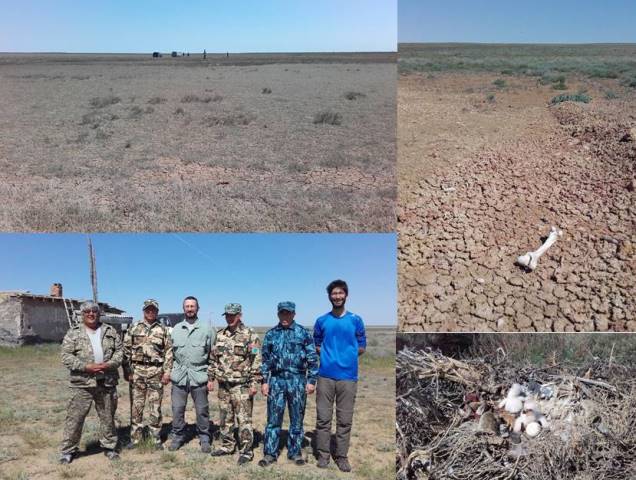Dr. Eric Morgan is back out in Kazakhstan, visiting the areas where the mass-die off occurred last year. He’s written us another blog about their trip to a much quieter steppe:
“It is hard to express how vast and unpeopled it is here on the Turgai steppe.
Yesterday, we visited a farmer to ask some questions about last year’s saiga die-offs, and then drove on to the nearest village. It was 120 km (75 miles) away on dirt roads, with only a couple of checkpoints and the ruins of a Soviet settlement to interrupt the journey. I imagine people here check their shopping lists twice before leaving home.
In two weeks of crossing this sea of grass we saw only four saigas; and where huge herds congregated last year to calve, and die: none. The isolation certainly helps to protect those that remain: if they can’t be found, they can’t be harmed, at least by human hands. This time, though, should they bounce back, they will be better protected than 20 years ago.
Rangers continue to clock on, 15 days at a time, to survey the steppe, still full of life though not for now of saigas. The Altyn Dala reserve is a reality. We met some of the young people working for the reserve who, last year, were called to bury thousands of the animals they were sworn to protect, and they described the shock and sleepless nights. But none seemed downhearted one year on: all were keen to know why it happened, but keener still to see their jobs through.
We know that some saigas, further away, survived and apparently calved normally this year with no signs of disease. When (we hope) the saigas return, there is a place for them here, and people on their side, who better than ever appreciate their fragility and admire their resilience.”
Featured photo: Saiga burial sites, rangers who took Eric to remote parts of the steppe and nesting steppe eagles.
Dr. Eric Morgan is a professor of Veterinary Parasitology at the University of Bristol School of Biological Sciences.

